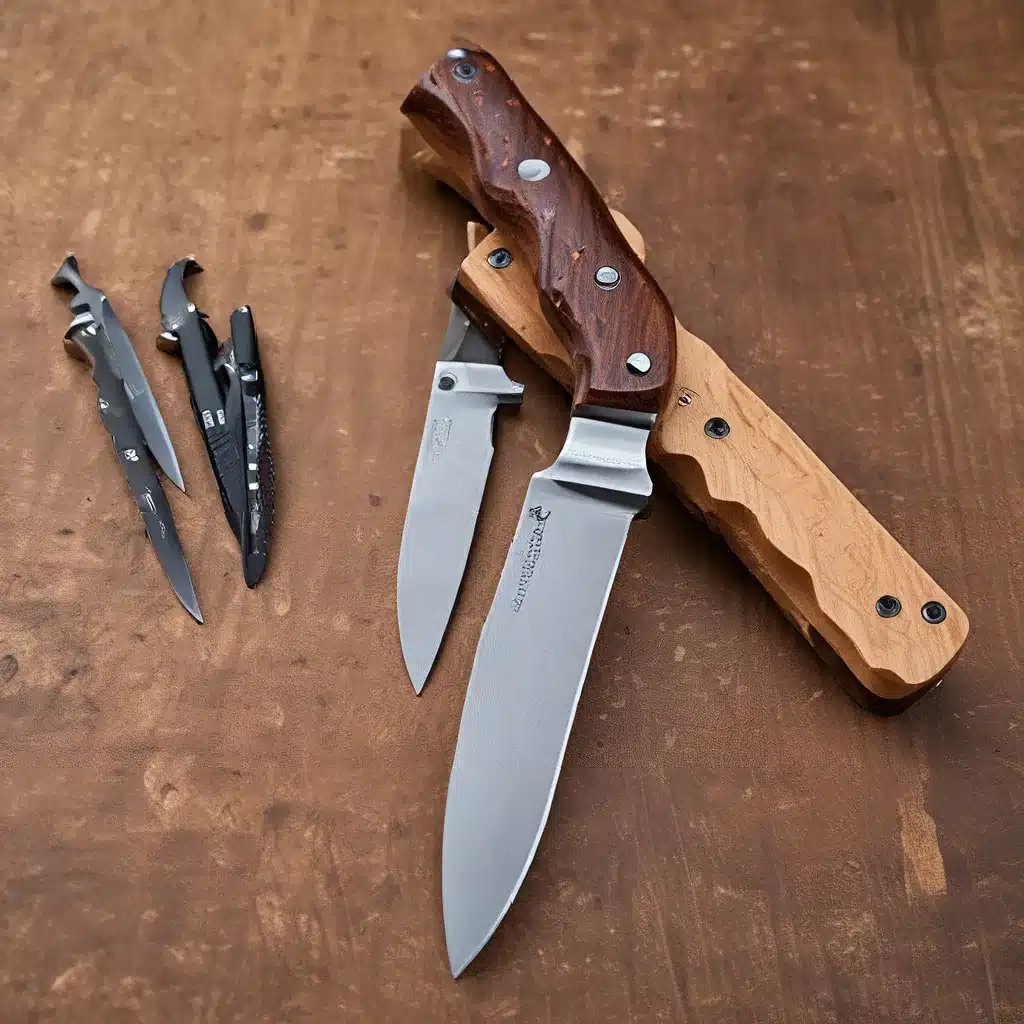
The Blade’s Edge: A Captivating Journey
I’ve always been fascinated by the evolution of knives – how these humble tools have transformed over centuries, adapting to the needs of our ever-changing world. As a self-professed knife enthusiast, I can’t help but marvel at the ingenuity and craftsmanship that goes into creating these versatile implements.
From the primitive stone blades of our ancestors to the high-tech, precision-engineered marvels of today, the story of knives is a tale of human innovation. It’s a narrative that mirrors our own progress as a species, an endless pursuit of improving upon the past to forge a better future.
Unlocking the Potential: The Dawn of Knife Technology
Let’s rewind the clock and explore the humble beginnings of knife technology. The earliest knives were fashioned from sharpened stones, crude yet effective tools for tasks like hunting, butchering, and cutting. These primitive blades were the foundation upon which all subsequent knife innovations would be built.
As our ancestors mastered the art of metalworking, the transition to bronze and iron knives marked a significant leap forward. These more durable and reliable blades allowed for more precise and efficient tasks, opening up new possibilities in areas like agriculture, carpentry, and even culinary arts.
The introduction of stainless steel in the early 20th century was another transformative moment in knife history. This rust-resistant alloy revolutionized the way we thought about blade maintenance and longevity, making knives more practical and accessible than ever before.
Pushing the Boundaries: Modern Knife Innovations
But the story of knife evolution doesn’t end there. In recent decades, we’ve witnessed a veritable explosion of technological advancements in the world of knives. Let’s explore some of the most remarkable developments:
Ceramic Blades: Offering exceptional hardness and corrosion resistance, ceramic knives have become a popular choice for chefs and home cooks alike. These lightweight, ultra-sharp blades maintain their edge remarkably well, making them a practical and environmentally-friendly alternative to traditional steel.
Titanium Alloys: Renowned for their strength-to-weight ratio, titanium alloys have found their way into the knife industry, producing blades that are both durable and incredibly lightweight. This has opened up new possibilities for outdoor enthusiasts, adventurers, and those seeking a balance of performance and portability.
Precision Manufacturing: With the advent of advanced computer-aided design (CAD) and computer numerical control (CNC) machining, knife makers can now achieve unprecedented levels of accuracy and consistency in their products. This has led to the creation of meticulously engineered blades that rival the performance of custom-made knives.
Redefining the Future: Emerging Trends in Knife Technology
As we gaze into the future, the possibilities for knife evolution seem almost limitless. Let’s explore some of the emerging trends that are poised to shape the next chapter of this captivating story:
Hybrid Materials: Innovative researchers are exploring the use of composite materials, blending the unique properties of different substances to create knives that are stronger, lighter, and more corrosion-resistant than ever before. This could lead to a new era of truly revolutionary blade designs.
Smart Knives: The integration of advanced sensors and microprocessors into knife design is a tantalizing prospect. Imagine a knife that can detect the exact pressure and angle of your cuts, providing real-time feedback to help you perfect your technique. These “smart” knives could revolutionize the way we approach tasks, from culinary arts to industrial applications.
Sustainable Manufacturing: As the world becomes increasingly conscious of our environmental impact, knife manufacturers are exploring more eco-friendly production methods. This could involve the use of renewable materials, energy-efficient processes, and closed-loop recycling systems. The goal? To create knives that are not only high-performing but also sustainable.
Forging the Future: The Promise of Knife Technology
As I reflect on the remarkable journey of knife evolution, I can’t help but feel a sense of excitement for what the future holds. The blade’s edge has always been a symbol of human ingenuity, and I believe that the next generation of knife technologies will only serve to reinforce this legacy.
Whether it’s the development of cutting-edge materials, the integration of smart features, or the pursuit of sustainable manufacturing, the possibilities are truly limitless. And as a passionate advocate for the art of knife-making, I can’t wait to see what innovative minds will bring to the table.
So, my friends, let us embrace the future of knife technology with open arms. For in the endless pursuit of perfecting these humble tools, we unlock new realms of possibility, reshaping the way we interact with the world around us. The blade’s edge may be sharp, but the future it promises is nothing short of dazzling.


